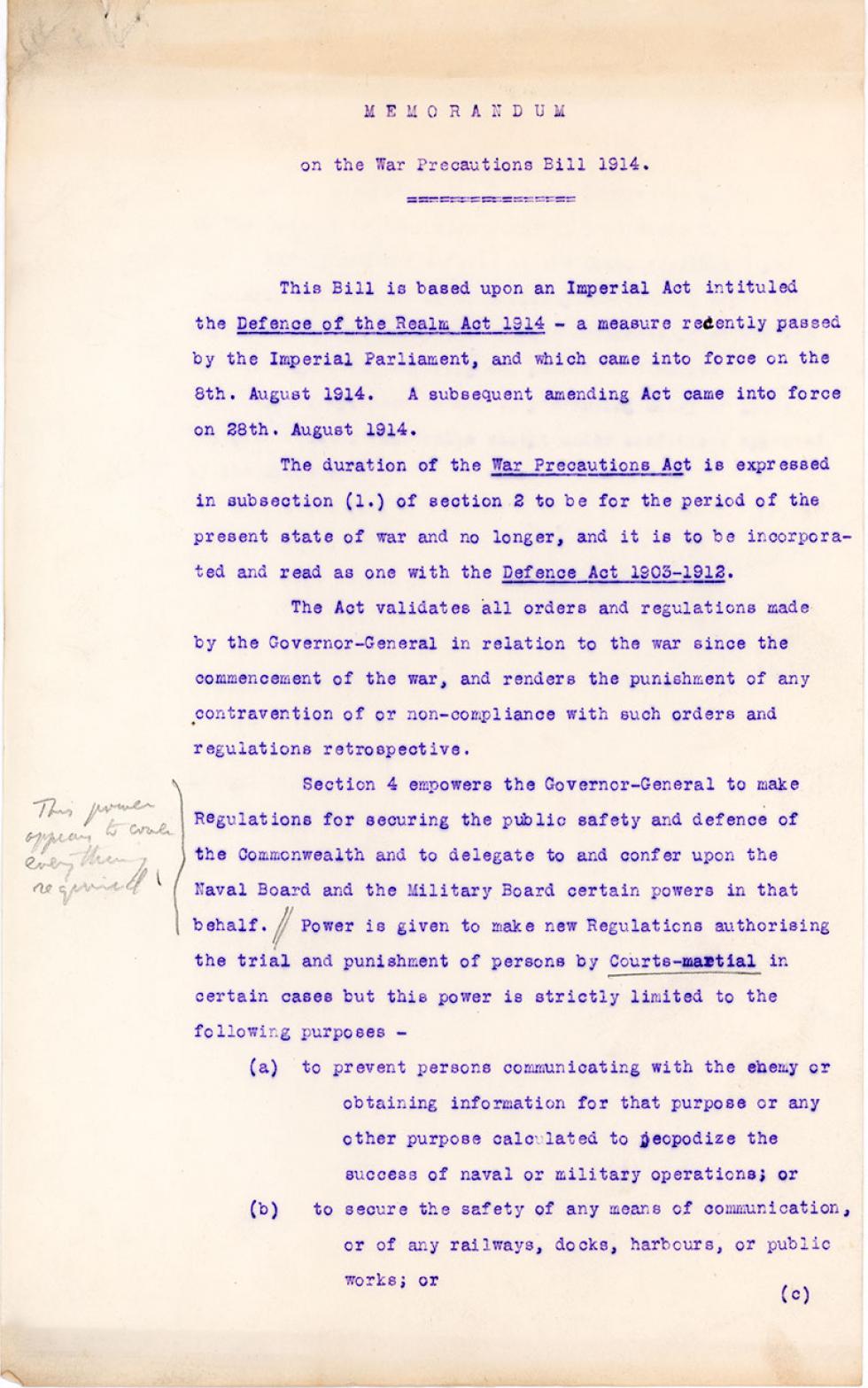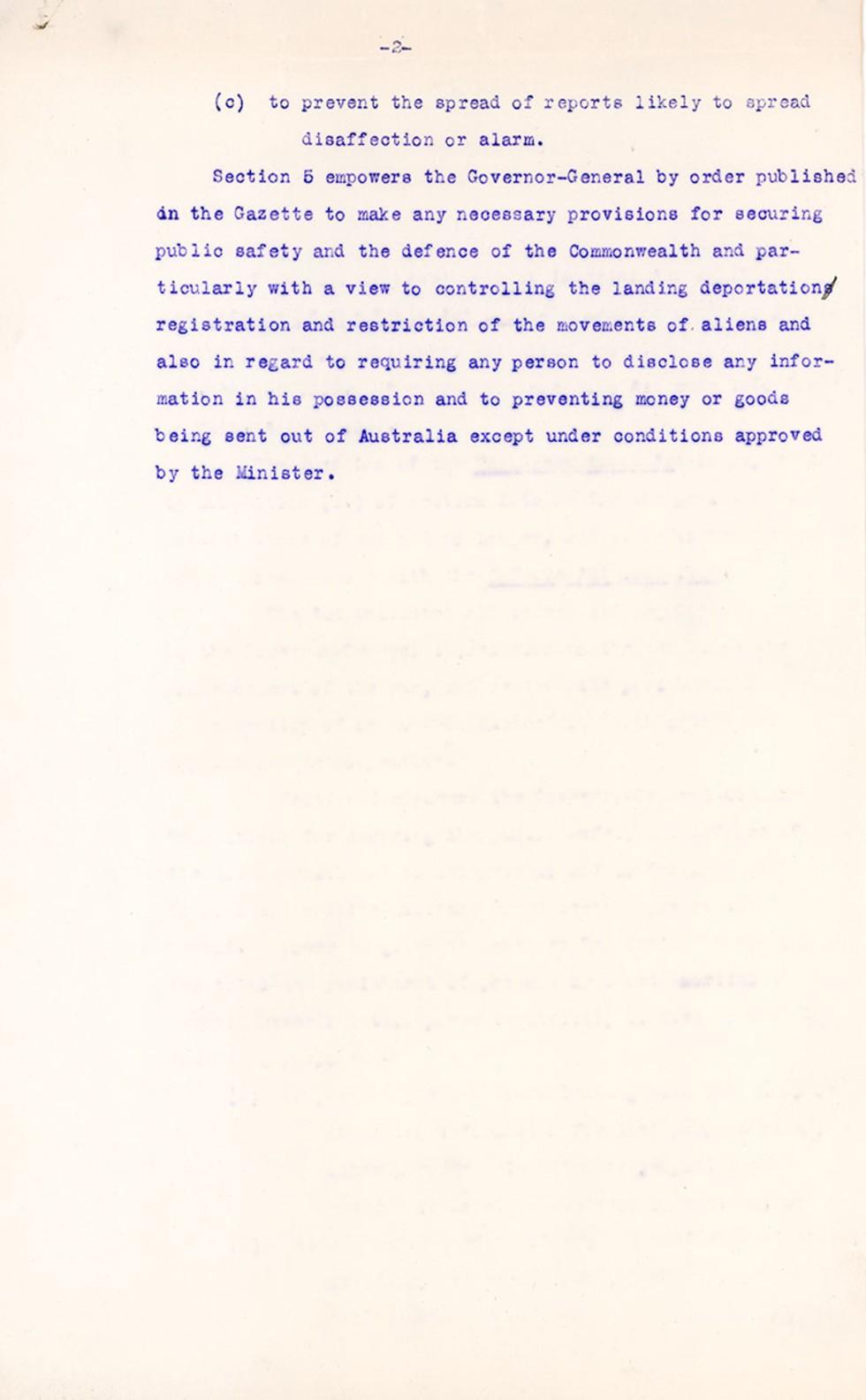

Aboriginal and Torres Strait Islander people should be aware that the National Archives' website and collection contain the names, images and voices of people who have died.
Some records include terms and views that are not appropriate today. They reflect the period in which they were created and are not the views of the National Archives.



This document is a memorandum that explains the purpose and scope of the War Precautions Bill, which was introduced to the Australian parliament just weeks after the outbreak of the First World War (WW1). By this time the need to take immediate steps to protect the public and secure the nation’s defence was widely recognised. All political parties supported the Bill, and the War Precautions Act 1914 was passed unanimously in October 1914. The handwritten note in the margin of the first page says, ‘This power appears to cover everything required.’ This comment, together with the other handwritten annotations, suggests that the document is a draft rather than the final version of the memorandum.
Learn how to interpret primary sources, use our collection and more.
